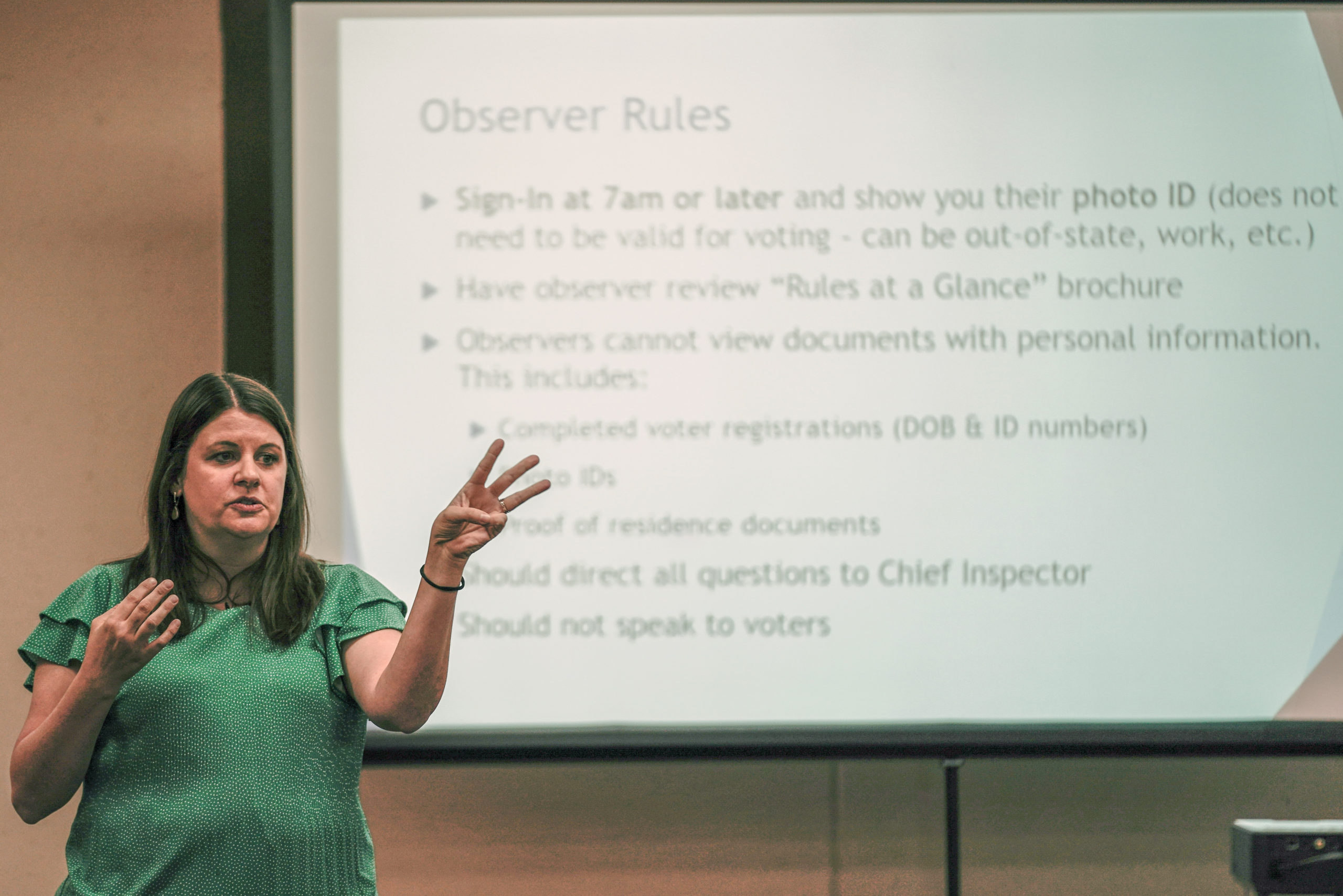Longer sentence on remand violates due process
By: dmc-admin//July 9, 2003//
When a defendant is resentenced after a successful appeal, the court can only impose a longer sentence if affirmative reasons justifying the longer sentence appear in the record, and are based on objective information regarding events or identifiable conduct on the defendant’s part subsequent to the original sentencing, the Wisconsin Supreme Court held on July 1.
In 1996, a jury found William Church guilty of five offenses: second-degree sexual assault, child sexual exploitation, delivery of a controlled substance, and two counts of child enticement. Prior to sentencing, Church moved to dismiss one of the two counts of child enticement as multiplicitous, but the circuit court denied the motion.
The court imposed a 13-year prison term on the sexual assault count and withheld sentence on the remaining counts, ordering probation terms of various lengths, consecutive to the prison sentence but concurrent to each other. Church appealed, again arguing that the two child enticement counts were multiplicitous.
The court of appeals agreed, and reversed one of the two child enticement counts. State v. Church, 223 Wis.2d 641, 589 N.W.2d 638 (Ct.App.1998). However, instead of simply vacating the conviction and the order of concurrent probation on one count of child enticement, the court of appeals vacated all the sentences in the case and remanded for resentencing on the four remaining counts, concluding it was bound to do so, pursuant to State v. Gordon, 111 Wis. 2d 133, 330 N.W.2d 564 (1983), and per Church’s request.
On remand, the circuit court imposed 17 years on the sexual assault count, a four-year increase, and reimposed the terms of probation on the remaining three counts. As justification, the court noted that Church had received no sex offender treatment yet.
Church appealed, but the court of appeals affirmed in a published opinion, State v. Church, 2002 WI App 212, 257 Wis.2d 442, 650 N.W.2d 873. The Wisconsin Supreme Court accepted review, and reversed in a unanimous decision by Justice Diane S. Sykes.
Remand
The court first held that the court of appeals was not required, after the first appeal, to vacate all the sentences and remand for resentencing.
The court acknowledged that, in Gordon, it did not explain the circumstances under which a remand for resentencing is required when one or more counts in a multi-count case is vacated on appeal, leaving other counts intact.
Nevertheless, the court found, “It is clear, however, that the elimination on double jeopardy grounds of one of the four counts in Gordon disturbed the original sentence structure, which called for the defendant to serve a total of 30 years in prison. The two eight-year sentences for robbery and burglary were concurrent, but the two 15-year sentences for kidnapping and second-degree murder were consecutive. Vacating the kidnapping conviction and sentence upset the overall sentencing structure, frustrating the intent of the original sentence. Remand for resentencing was necessary and appropriate, to allow for a restructuring of the remaining sentences to carry out the intent of the original dispositional scheme.”
The court added, “A double jeopardy bar to one conviction and sentence in a multi-count case does not operate to invalidate the sentences on all the remaining counts, nor does it necessarily invalidate the sentence on the specific surviving parallel count which gave rise to the double jeopardy challenge. … Resentencing is unnecessary, and certainly not required, where, as here, the invalidation of one count on double jeopardy grounds has no affect at all on the overall sentence structure.”
|
What the court held Case: State of Wisconsin v. William J. Church, No. 01-3100-CR. Issue: When a conviction is reversed for multiplicity, is remand for resentencing required? When a defendant was given a longer sentence on resentencing after one of his convictions was found mulitiplicitous, is due process violated? Holding: No. Where the vacated count did not affect the overall dispositional scheme of the initial sentence, resentencing is not required. Yes. The longer sentence creates a presumption of vindictiveness, and the defendant engaged in no conduct after the original sentence that overcame the presumption. Counsel: James L. Fullin, Madison, for the defendant-appellant-petitioner; David J. Becker, Madison, for the plaintiff-respondent. |
Vindictiveness/Due Process
The court then turned to whether it violated due process to impose a greater sentence on remand, and concluded that it did. The court began with a lengthy discussion of the leading U.S. Supreme Court case on vindictive resentencing, North Carolina v. Pearce, 395 U.S. 711 (1969).
To protect defendants against due process violations upon resentencing, the Supreme Court in Pearce adopted the following rule: “In order to assure the absence of such a [vindictive] motivation, we have concluded that whenever a judge imposes a more severe sentence upon a defendant after a new trial, the reasons for his doing so must affirmatively appear. Those reasons must be based upon objective information concerning identifiable conduct on the part of the defendant occurring after the time of the original sentencing proceeding. And the factual data upon which the increased sentence is based must be made part of the record, so that the constitutional legitimacy of the increased sentence may be fully reviewed on appeal.” Pearce, 395 U.S. at 726.
Justice White concurred in Pearce, stating he would “authorize an increased sentence on retrial based on any objective, identifiable factual data not known to the trial judge at the time of the original sentencing proceeding.” Id. at 757 (White, J., concurring).
The Pearce majority also stated a bit more broadly elsewhere in its analysis that a court “is not constitutionally precluded . . . from imposing a new sentence, whether greater or less than the original sentence, in the light of events subsequent to the first trial that may have thrown new light upon the defendant’s ‘life, health, habits, conduct, and mental and moral propensities.’” Id. at 723 (quoting Williams v. New York, 337 U.S. 241, 245 (1949)).
Distinguishing the majority opinion and the concurrence, the Wisconsin Supreme Court stated, “The difference between ‘conduct occurring after’ and ‘events subsequent to’ the original sentencing seems subtle, but in any event, Justice White clearly would have allowed a harsher sentence based upon any information not known to the trial judge at the time of the initial sentencing, whether it pertained to conduct or events occurring before or after the initial sentencing.”
The court then noted a later decision of the Supreme Court, Texas v. McCullough, 475 U.S. 134 (1986), in which the Supreme Court permitted a longer sentence after remand and retrial, because evidence at the second trial indicated that the defendant was the perpetrator of the crime, rather than merely an abettor, as the evidence at the first trial had suggested.
Wisconsin Law
Having reviewed U.S. Supreme Court precedent, the court turned to Wisconsin precedent, and found that the two were irreconcilable.
The seminal case in Wisconsin is State v. Leonard, 39 Wis.2d 461, 159 N.W.2d 577 (1968), which predated the Supreme Court’s decision in Pearce by a year. In Leonard, the court concluded that, “[O]n resentencing following a second conviction after retrial, or mere resentencing, the trial court shall be barred from imposing an increased sentence unless (1) events occur or come to the sentencing court’s attention subsequent to the first imposition of sentence which warrant an increased penalty; and (2) the court affirmatively states its grounds in the record for increasing the sentence.” Leonard, 39 Wis. 2d at 473.
Discussing Leonard and Pearce, the court observed, “A year after Leonard, the Supreme Court decided Pearce. Subsequent Wisconsin case law has not reconciled the two cases with any clarity or consistency. We have stated that the Leonard rule is both ‘substantially similar to’ and ‘broader than’ the Pearce rule, and also that the two rules are based on the same ‘purposes’ and ‘due process rules.’” citing State v. Martin, 121 Wis. 2d 670, 687, 360 N.W.2d 43 (1985).
The court also noted that it has previously observed that Leonard is more in accord with Justice White’s concurrence in Pearce, rather than the majority rule. Denny v. State, 47 Wis. 2d 541, 545, 178 N.W.2d 38 (1970). Discussing the incongruity, the court stated, “In State v. Stubbendick, 110 Wis.2d 693, 698, 329 N.W.2d 399 (1983), we characterized Denny as ‘adopt[ing] Justice White’s concurrence’ in Pearce, even though Denny did not do so, and it would be odd for a state court to adopt a single-vote Supreme Court concurrence as authoritative on a matter of federal constitutional law.”
Then, in Grobarchik v. State, 102 Wis.2d 461, 307 N.W.2d 170 (1981), the court held that neither Pearce nor Leonard were applicable to cases in which the reason the original sentence was vacated was that it was unauthorized by law. In such a case, the court held an increased sentence is lawful only when based upon a desire to implement the original dispositional scheme as manifested by the first sentencing proceeding.
Reconciliation
The court then tried to reconcile federal and state precedent and concluded it could not.
The court noted, “Applying either Leonard or Pearce … requires reversal, but applying Leonard would be problematic for a number of reasons. At first blush, Leonard appears to create a strict bar against increased sentences on resentencing (except where the two requirements are met), whether after retrial or otherwise. But while Leonard on its face applies to all resentencings, those following retrial ‘or mere resentencings,’ Id., we have held that there are some resentencings that do not fall within the Leonard rule. Grobarchik, Martin, and by implication the Ronzani-Gordon line of cases are not subject to the Leonard rule. Grobarchik and Martin guard against due process/vindictiveness violations on resentencing not by requiring the circuit court to state objective new factors on the record, but by requiring the circuit court to stick to the original record and general overall sentence structure. As we have noted, that did not occur here.”
“Reconciling Leonard with Pearce is difficult for another reason: the circumstances under which a harsher sentence may be imposed are stated more broadly in Leonard than in Pearce, even in light of later Supreme Court case law explaining the Pearce presumption. A longer sentence may be imposed under Leonard where ‘events occur or come to the sentencing court’s attention subsequent to the first imposition of sentence which warrant an increased penalty,’ as long as the court states its reasons on the record. Leonard, 39 Wis. 2d at 473 (emphasis added). This appears to mean that events or conduct in existence and known to the prosecution but not brought to the circuit court’s attention at the original sentencing hearing would be sufficient to justify a longer sentence on resentencing.”
| |
||
| |
||
“In practical terms, then, the resentencing, which occurs only because the defendant has been successful on post-conviction motion or appeal, can under Leonard become a second opportunity for the prosecution to persuade the judge to impose a harsher sentence based on information it could have presented the first time around, but did not. This contradicts Pearce’s central purpose, which is to prevent the resentencing process from becoming a vindictive exercise that pen-alizes a defendant who has succeeded in having his conviction or sentence set aside. Our case law cannot provide less protection than federal due process law provides; at least some applications of the Leonard rule would be suspect under Pearce.”
Because Leonard is inconsistent with Pearce, and Grobarchik is inapplicable, the court applied Pearce, and concluded the presumption that the longer sentence was vindictive had not been rebutted, and the sentence must be reversed.
The court reasoned, “The longer sentence in this case was premised on the passage of time: four years of incarceration had gone by, and Church was still (mostly) in denial and had not sought or received treatment. This does not constitute ‘objective information’ of ‘identifiable conduct on the part of the defendant’ subsequent to the original sentencing. It constitutes a subjective evaluation of the status of Church’s rehabilitation at the time of resentencing, based not on any new facts but on the mere continued existence of the original facts.”
The court added, “In addition, there is no evidence that Church refused any treatment opportunity while in prison. Indeed, the evidence at the resentencing hearing established that sex offender treatment was not typically offered until the end of an inmate’s prison term and was not available to Church during his first four years of incarceration.”
Accordingly, the court reversed.
Click here for Case Analysis.
David Ziemer can be reached by email.
Legal News
- Money isn’t enough to smooth the path for Republican candidates hoping to retake the Senate
- Milwaukee election leader ousted 6 months before election in presidential swing state
- Former President Trump calls for arrest of special prosecutor Jack Smith
- Wisconsin judge dismisses lawsuit challenging state’s new wolf management plan
- Wisconsin Supreme Court issues opinion on Milwaukee Police officer fired over Facebook posts
- Gov. Evers Seeks applicants for Menominee County Register of Deeds
- Donald Trump calls Joe Biden weak on antisemitism, ignoring his own rhetoric
- Gov. Evers again calls Republican lawmakers into special meeting
- CIA is obstructing justice and witness tampering in Havana Syndrome cover up, attorney says
- Wisconsin Supreme Court will decide whether mobile voting sites are legal
- WisDOT honors Wisconsin State Patrol staff for going above and beyond to keep communities safe
- Milwaukee Men sentenced to Federal Prison for pharmacy robberies and firearms offenses
WLJ People
- Power 30 Personal Injury Attorneys – Russell Nicolet
- Power 30 Personal Injury Attorneys – Benjamin Nicolet
- Power 30 Personal Injury Attorneys – Dustin T. Woehl
- Power 30 Personal Injury Attorneys – Katherine Metzger
- Power 30 Personal Injury Attorneys – Joseph Ryan
- Power 30 Personal Injury Attorneys – James M. Ryan
- Power 30 Personal Injury Attorneys – Dana Wachs
- Power 30 Personal Injury Attorneys – Mark L. Thomsen
- Power 30 Personal Injury Attorneys – Matthew Lein
- Power 30 Personal Injury Attorneys – Jeffrey A. Pitman
- Power 30 Personal Injury Attorneys – William Pemberton
- Power 30 Personal Injury Attorneys – Howard S. Sicula











